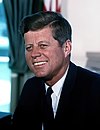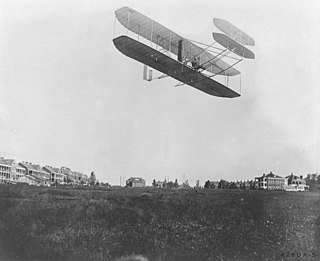
Fort Myer is the previous name used for a U.S. Army post next to Arlington National Cemetery in Arlington County, Virginia, and across the Potomac River from Washington, D.C. Founded during the American Civil War as Fort Cass and Fort Whipple, the post merged in 2005 with the neighboring Marine Corps installation, Henderson Hall, and is today named Joint Base Myer–Henderson Hall.
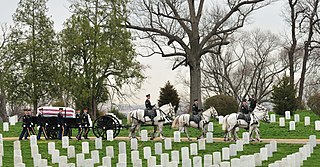
A military funeral is a memorial or burial rite given by a country's military for a soldier, sailor, marine or airman who died in battle, a veteran, or other prominent military figures or heads of state. A military funeral may feature guards of honor, the firing of volley shots as a salute, drumming and other military elements, with a flag draping over the coffin.

A riderless horse is a single horse without a rider and with boots reversed in the stirrups, which sometimes accompanies a funeral procession. The horse, sometimes caparisoned in black, follows the caisson carrying the casket. A riderless horse can also be featured in parades to symbolize either fallen soldiers, fallen police officers or deceased equestrian athletes. A motorcycle can be used as a substitute for a horse though such practice is very rare.

The 3rd United States Infantry Regiment is a regiment of the United States Army. It currently has three active battalions, and is readily identified by its nickname, The Old Guard, as well as Escort to the President. The regimental motto is Noli Me Tangere. The regiment is a major unit of the Military District of Washington (MDW).

The United States Army Military District of Washington (MDW) is one of nineteen major commands of the United States Army. Its headquarters are located at Fort Lesley J. McNair in Washington, D.C. The missions of the units in the Military District of Washington include ceremonial tasks as well as a combat role in the defense of the National Capital Region.

Lieutenant General Guy Carleton Swan III is a retired United States Army officer. His final assignment was Commanding General United States Army North at Fort Sam Houston, Texas.
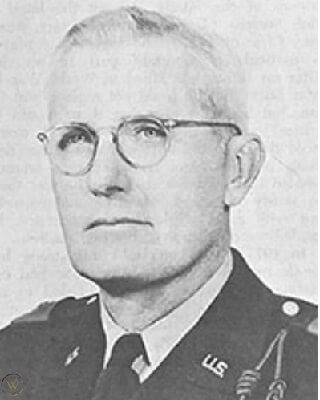
Philip Campbell Wehle was a major general in the U.S. Army and the commanding general of the Military District of Washington (MDW) from 1963 to 1965.

Comanche was a mixed-breed horse who survived George Armstrong Custer's detachment of the United States 7th Cavalry at the Battle of the Little Bighorn.
Harry Rozmiarek was a noted veterinarian, academic, and laboratory animal care specialist.

In the United States, state funerals are the official funerary rites conducted by the federal government in the nation's capital, Washington, D.C., that are offered to a sitting or former president, a president-elect, high government officials and other civilians who have rendered distinguished service to the nation. Administered by the Military District of Washington (MDW), a command unit of the Joint Force Headquarters National Capital Region, state funerals are greatly influenced by protocol, steeped in tradition, and rich in history. However, the overall planning as well as the decision to hold a state funeral, is largely determined by a president and their family.
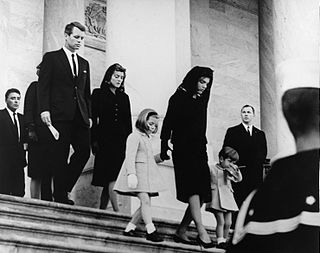
The state funeral of U.S. President John F. Kennedy took place in Washington, D.C., during the three days that followed his assassination on Friday, November 22, 1963, in Dallas, Texas.

Joint Base Myer–Henderson Hall is a Joint Base of the United States military that is located around Arlington, Virginia which is made up of Fort Myer (Arl), Fort McNair, and Henderson Hall. It is the local residue of the Base Realignment and Closure, 2005 process. It is commanded by the United States Army but has resident commands of Army, Navy, & Marines. Most conspicuous is the Arlington National Cemetery Honor Guard.

A military funeral in the United States is a memorial or burial rite conducted by the United States Armed Forces for a Soldier, Marine, Sailor, Airman, Guardian or Coast Guardsman who died in battle, a veteran, or other prominent military figures or a president. A military funeral may feature guards of honor, the firing of volley shots as a salute, drumming and other military elements, with a flag draping over the coffin.

The Commander-in-Chief's Guard – also known as the CINC Guard but officially Company A, 4th Battalion, 3rd U.S. Infantry Regiment – is an infantry unit of the United States Army that also has public duties and riot control missions within the Washington metropolitan area. Posted at Joint Base Myer–Henderson Hall in Arlington, VA, it is the nominal continuation of George Washington's bodyguard. The Commander-in-Chief's Guard is designated by the U.S. Army as a "Special Ceremonial Unit" and is part of the 3rd Infantry Regiment, the United States' presidential escort regiment.
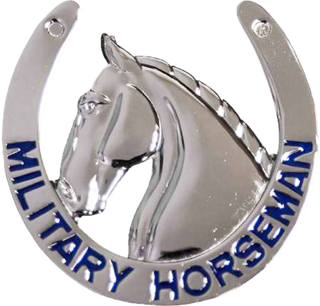
The Military Horseman Identification Badge recognizes United States Army soldiers who complete the nine-week Basic Horsemanship Course and serve as a lead rider on the Caisson team within the 3rd U.S. Infantry Regiment. The badge was first awarded on September 29, 2017, to soldiers during a ceremony held at Joint Base Myer-Henderson Hall, Virginia.

Klinger is a horse owned by the United States Army. An inductee into the Horse Stars Hall of Fame, as of 2017 he was posted to Washington, D.C.
Chief (1932–1968) was a horse owned by the United States Army. He has been credited as the Army's last living operational cavalry mount. Mustered into service in 1940 in Nebraska, Chief was posted to Fort Riley and served with the 9th and 10th Cavalry Regiments before being sent to the U.S. Army Cavalry School. In 1949–1950, he was retired and put out to pasture; he died in 1968.

Sergeant York is a retired horse that was previously owned by the United States Army.
Fred Moore is a former U.S. Army soldier and former member of the 3rd U.S. Infantry Regiment, best known as the prestigious "The Old Guard” or Honor Guard Company sentinel of Company E, 4th Battalion.

